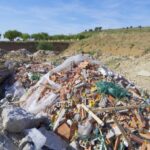Approximately 13 tonnes of hazardous trash are produced every second in the entire planet. To safeguard our world for future generations, this type of modern human-produced garbage must be properly handled, stored, and disposed of.
Toxic waste is constantly being produced by humans. Industrial, agricultural, and domestic use all affect the amount of waste that is generated. An increasing number of towns are being affected by the problem, which is now more serious than ever.
Massive in scope and rich in variety, the universe of hazardous waste exists today. It can, for example, exist in several states like as gas, liquid, or solid. In addition, hazardous waste comes in a variety of forms and has unique characteristics. Additionally, the US Environmental Protection Agency has its own definition of “hazardous waste” (EPA).
Types Of Hazardous Waste
It is possible to classify hazardous waste in a variety of ways, just as there are various ways to define what constitutes hazardous waste.
Characteristics
Hazardous waste exhibits a number of characteristics, including the following:
Reactivity
In certain circumstances, this type of trash causes chemical reactions. Different gases, fumes and/or vapours may come out of this, which can cause an explosion. Activation occurs when water is added to the compound or if the substance is squeezed. A few examples are unused explosives or lithium/sulfur batteries.
It’s vital to keep in mind that there are no reactivity test methodologies. This feature can be tested in a manner that adheres to hazardous waste rules.
Corrosivity
Solids that are acidic or basic, or that produce acidic or alkaline solutions, are known as corrosive wastes. Acidic waste, on the other hand, has a pH level of between 2.0 and 12.5.
When liquid waste can damage metal containers such drums, tanks, and barrels, it can be corrosive. For instance, battery acid is one such example. The Environmental Protection Agency (EPA) uses a variety of ways to determine if waste is corrosive.

Ignitability
They can cause a flash point of less than 60°C (140°F), start flames, or explode (spontaneous combustion). Used solvents or waste oil are only a couple of the many possible instances.
The ignitability of the trash can be determined using a variety of ways. Various techniques are employed, including those developed by the United States Environmental Protection Agency (EPA).
Toxicity
When ingested or absorbed, toxic waste can be harmful or even lethal. Lead, Dichlorodiphenyltrichloroethane (DDT), mercury, and other chemicals are all part of this. Groundwater can get contaminated if harmful wastes are disposed of improperly.
A chemical is considered “toxic” if it exhibits at least one of the following characteristics:
Toxicology Of The Dermis
It is a test for substances that are mildly poisonous or have a mildly toxic chemical that can be triggered by contact with the skin. Some degree of skin toxicity is required.
Cancer-Causing Potential
There is a particular degree of cancer-causing material in the faeces that makes it harmful in this case. Since cancer is among the leading causes of mortality worldwide, this is a critical concern (WHO).
Extraction Of Waste
When it comes to a technique known as “total digestion,” the Waste Extract Test (WET) is an important component. A substance’s toxigenicity is determined by comparing the results of a lab test with the numerous standards governing toxic waste.
Toxicity Characteristics Of Leaching Method
Hazardous waste, as defined by the Environmental Protection Agency (EPA), is any waste that has the potential to release toxic compounds into the environment.
Rules for hazardous waste are compared to the results of TELP tests. The EPA’s RCRA does not apply to non-regulated wastes.
Toxicity Of The Mouth
Poisonous waste of this type is produced by substances that are somewhat toxic or that become slightly toxic if consumed. An oral toxicity level of a certain type of waste indicates that the waste is harmful to the human body.
Acute Aquatic Toxicity
When fish were exposed to harmful waste, they become ill. To evaluate whether the waste is hazardous to aquatic life, a test process is used.



